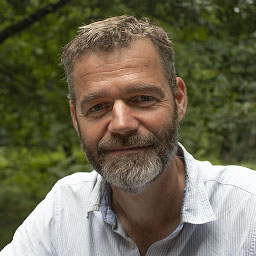Professor Marcel Vellinga
Professor of Anthropology of Architecture
School of Architecture

Role
Professor Vellinga is a researcher and teacher specialised in the anthropology of architecture; vernacular architecture; rural architectural regeneration; tradition, culture and sustainability; and ethnographic research methods. Marcel is also a supervisor on the PhD programme.
Key responsabilities include:
- Research Lead of the School of Architecture
- Director, Place, Culture and Identity Research Group
- Director, Endangered Wooden Architecture Programme
Teaching and supervision
Courses
Modules taught
Marcel is module leader for the following modules:
- Architecture, Culture and Tradition (P30025)
- Vernacular Architecture, Sustainability and Development (P30022)
- Independent Study (P30381)
He also contributes to various other undergraduate and postgraduate modules, including:
- Dissertation (U30099)
- Architecture and Society (U30006)
- Applications in Regeneration (P30205)
- Research Methods for Design (P30026)
Supervision
Marcel has supervised 16 PhD students to completion and is currently the supervisor of 4 PhD students. He welcomes applications related to the anthropology of architecture, vernacular architecture and rural regeneration.
Research
Holding a PhD in Cultural Anthropology from Leiden University (the Netherlands), Marcel has extensive research and teaching experience in the fields of cultural anthropology and international vernacular architecture studies. Over the years he has taught and published on a variety of topics including vernacular architecture, the anthropology of architecture, rural architectural regeneration, Minangkabau architecture, tradition and sustainable development.
Marcel is author of Constituting Unity and Difference: Vernacular Architecture in a Minangkabau Village (KITLV Press 2004); co-author, with Paul Oliver and Alexander Bridge, of the Atlas of Vernacular Architecture of the World (Routledge 2007); and co-editor, with Lindsay Asquith, of Vernacular Architecture in the 21st Century: Theory, Education and Practice (Taylor & Francis 2006) and, with Daniel Maudlin, of Consuming Architecture: On the Occupation, Appropriation and Interpretation of Buildings (Routledge 2014). Marcel is the editor of The Bazaar of Isfahan, which was originally conceived by Ali Bakhtiar, John Donat and Paul Oliver (Argumentum, 2016).
Marcel is the Editor-in-Chief of the second revised edition of the Encyclopedia of Vernacular Architecture of the World, to be published in 2018 (in print and online) by Bloomsbury Publishing. His current research project (supported by the British Academy and Leverhulme Trust) focuses on the life and works of the German architect, planner and urban historian Erwin Anton Gutkind. In 2015 he curated the ‘Architecture for All: The Photography of Paul Oliver’ exhibition in the Pitt Rivers Museum in Oxford.
Marcel is the Director of the Endangered Wooden Architecture Programme.
Research grants and awards
- 2016: Oxford Brookes University: Research Excellence Fellowship
- 2016: Wenner-Gren Foundation: Historical Archives program Grant: Paul Oliver Vernacular Architecture Library Archive
- 2015: The Barakat Trust, Publication Grant: The Bazaar of Isfahan.
- 2014: British Academy/ Leverhulme Trust Small Research Grant: Erwin Anton Gutkind (1886-1968): Architect and Scholar
Centres and institutes
Groups
Projects
- Architectural Regeneration
- Biodiversity working group
- Black in Architecture
- Encyclopedia of Vernacular Architecture of the World
- Endangered Wooden Architecture Programme (EWAP)
- Erwin Anton Gutkind (1886-1968): Architect and Scholar
Projects as Principal Investigator, or Lead Academic if project is led by another Institution
- Endangered Wooden Architecture Program (Arcadia) (01/01/2021 - 30/09/2026), funded by: Arcadia Fund, funding amount received by Brookes: £1,302,065
Publications
Professional information
Memberships of professional bodies
Marcel is a Director of the Paul Oliver Vernacular Architecture Library (POVAL), one of the world's largest collections of books, journals, theses and images focused on the vernacular architecture of the world, which is housed in the Main Library of Oxford Brookes University.
He is a member of:
- The editorial boards of Vernacular Architecture and Traditional Dwellings and Settlements Review.
- The International Association for the Study of Traditional Environments (IASTE),
- The International Network for Traditional Building,
- Architecture and Urbanism (INTBAU) and
- The International Vernacular Architecture Committee (CIAV) of ICOMOS.
Marcel is a member of REF 2021 sub-panel 32 Art and Design: History, Practice and Theory; the AHRC Peer Review College; and the UKRI Future Leaders Fellowships Peer Review College.
